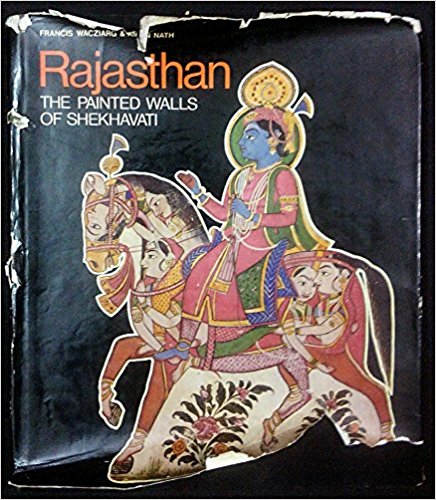Art has historical roots that lie outside it, and it has his¬torical consequences that again lie outside it the work of art closest to perfection is both most profoundly determined by its time and goes furthest be¬yond it into timelessness, while the imperfect work of art re¬mains caught in the spatial and temporal conditions precisely because it has been touched by them most superficially.
(Max Raphael, Notes on the nature of Art, 1945)
Between the eighteenth and early twentieth centuries a unique artistic style evolved in the semi-desert areas of North Rajasthan called Shekhavati. Under the patro¬nage of a growing mercantile class who built enormous havelis in their home towns, artists were: commissioned to embellish the bare walls. Without a distinct style and drawing from sources ranging from the classical to the folk, these artists decorated the resi¬dence and temples of their patrons with remarkable technical innovation.

